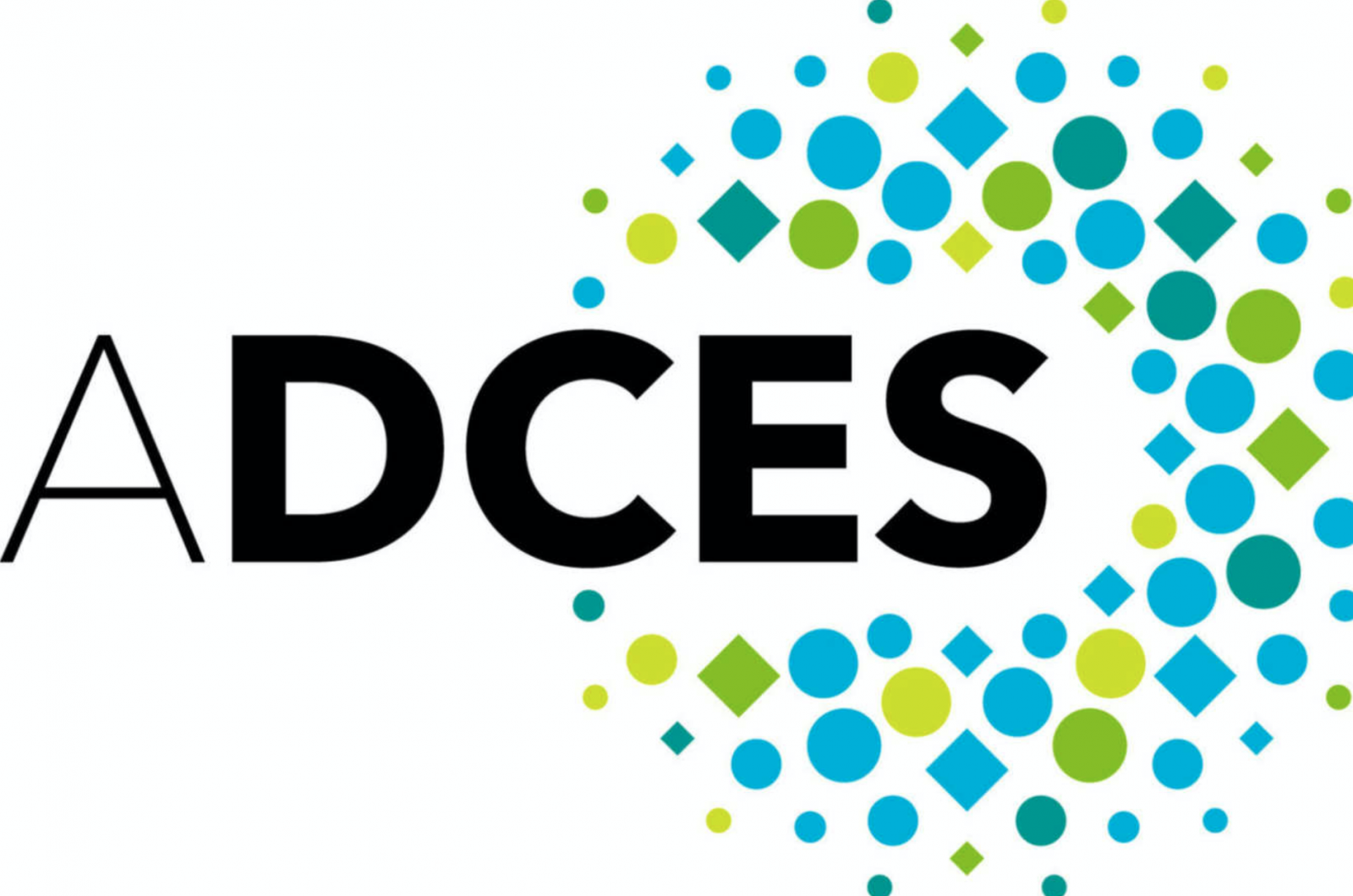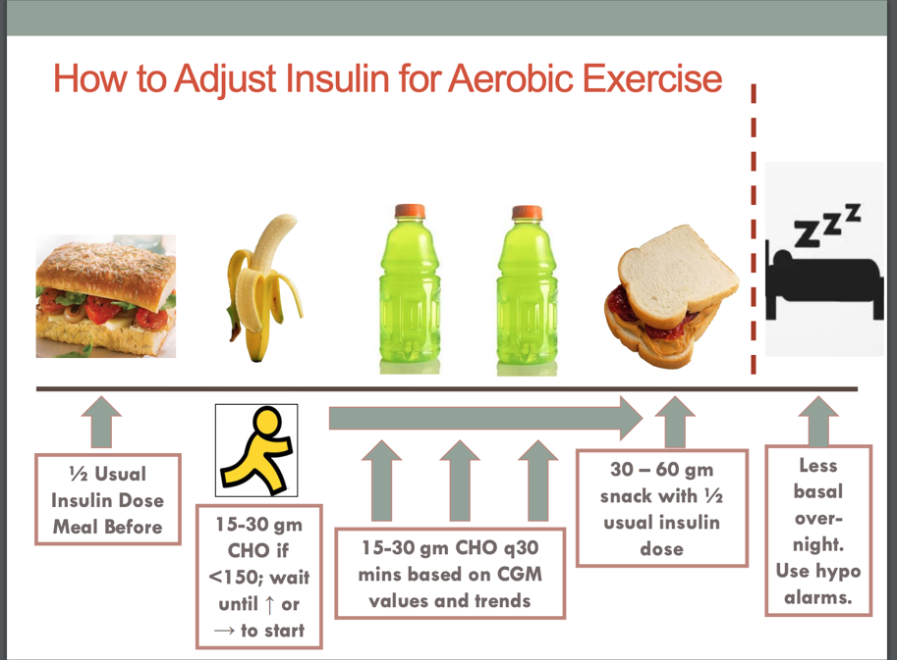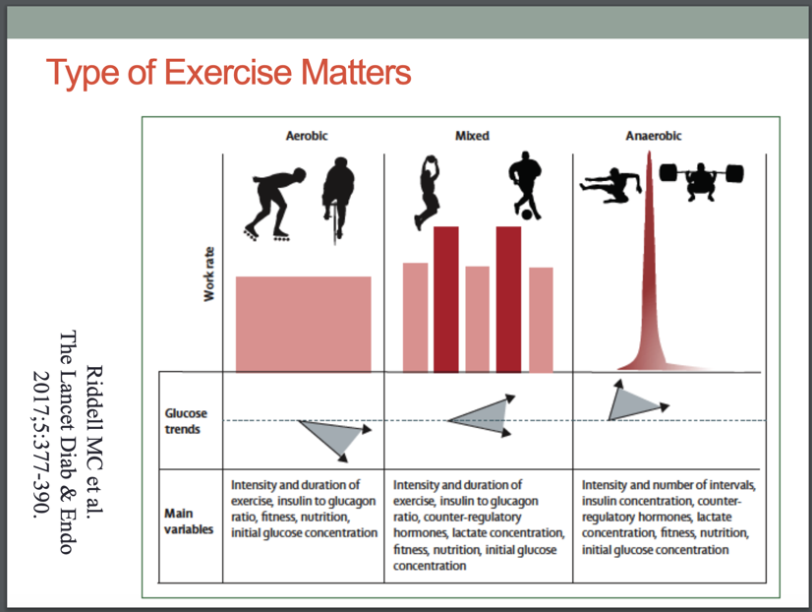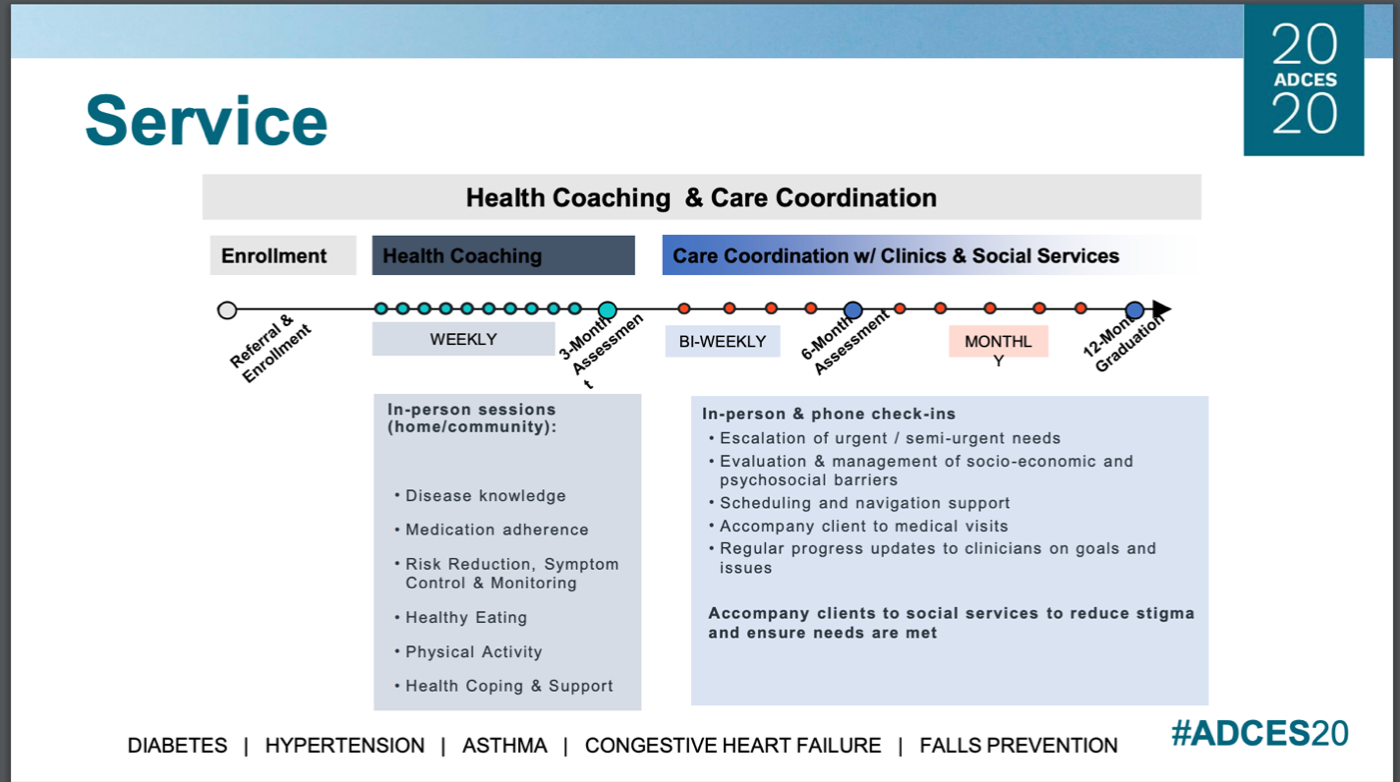Association of Diabetes Care and Education Specialists’ Conference Highlights
By Eliza SkolerMatthew Garza
 By Eliza Skoler, Matthew Garza, Nena Kotsalidis, Wania Ahmad, Lucy Masto, and Peninah Benjamin
By Eliza Skoler, Matthew Garza, Nena Kotsalidis, Wania Ahmad, Lucy Masto, and Peninah Benjamin
The Association of Diabetes Care and Education Specialists' 2020 conference covered how to use CGM to adjust insulin during exercise, how to reduce fear of hypoglycemia, the benefits of involving community health workers in diabetes care, and more
The Association of Diabetes Care and Education Specialists (ADCES) conference focused on ways that people with diabetes can keep their blood sugars within safe ranges. Experts discussed insulin dosing during exercise, trading hypoglycemia fear for confidence, enjoyable movement for people with larger bodies, and time in range. For more coverage from this amazing conference, read our initial highlights.
Click to jump down to a section:
-
CGM can help adapt insulin doses to manage glucose and avoid hypoglycemia while exercising
-
City Health Works: Community health workers deliver diabetes education services
-
Enjoyable Movement: Perspectives from People Living in Larger Bodies
CGM can help adapt insulin doses to manage glucose and avoid hypoglycemia while exercising
Dr. Anne Peters and Mark Harmel discussed how people with diabetes can use continuous glucose monitors (CGM) to help them exercise safely. Dr. Peters said that there are two times in which people need more glucose: immediately during exercise and after exercise, during recovery. The recovery time point is especially important for people with diabetes to be aware of – often, people will experience hypoglycemia in the hours after they exercised.
Dr. Peters provided a few general recommendations to avoid delayed hypoglycemia after exercise. Individual recommendations may vary depending on your personal response so please discuss these with your healthcare professional before trying them:
-
 Reduce insulin on board by only taking half of your normal insulin dose at pre-exercise meals.
Reduce insulin on board by only taking half of your normal insulin dose at pre-exercise meals. -
Don’t start exercising unless your glucose levels are above 150 mg/dl and showing a steady or upward trend arrow on your CGM.
-
Eat a small snack (30-60 grams) during long exercise, again taking only half of your usual insulin dose for that meal.
-
Reduce basal rate overnight after your activity to try and prevent delayed hypoglycemia.

The type of exercise you’re doing is also important. Aerobic exercise (cardio activities that make you breathe hard) typically reduces glucose levels due to longer activity, while anaerobic exercise – the word “anaerobic” means short bursts of intense activity – often raises glucose levels due to high-intensity repetitions. Mixed exercise, such as team sports like basketball or soccer, can make glucose levels vary as the intensity of the activity changes. Being aware of, and adjusting
to, variations in exercise and insulin sensitivity are essential to exercising with diabetes. The moment-to-moment data provided by CGM can make it much easier for people to monitor changes in their blood glucose and to work with their healthcare team to personalize exercise strategies. Editor’s note: work with your healthcare team to determine if you can qualify for CGM – for those in the US, especially those on Medicare, during the COVID-19 pandemic you may enable you to qualify for CGM without traditional hassle. Experience does vary – this is not a strategy that works for everyone.
Finally, Dr. Peters warned that using automated insulin delivery (AID) systems can be challenging for people if they forget to use the exercise mode of their system. Click to read diaTribe’s article on Exercising Well With Diabetes Using Automated Insulin Delivery by Dr. Laurel Messer and Dr. Michael Riddell.
Ways to fight fear and boost hypoglycemia confidence
Hypoglycemia (low blood sugar) can be dangerous for people with diabetes. As a result, many people fear a drop in their blood glucose levels. Christine Beebe and Dr. William Polonsky discussed strategies for helping people with diabetes and their care-partners build confidence about dealing with hypoglycemia. These strategies apply to healthcare professionals and to people with diabetes:
-
Talk to your healthcare professional about your level of fear around hypoglycemia so that they can better support you.
-
Share resources for preventing hypoglycemia and preparing low blood sugars. diaTribe has articles about hypoglycemia preparedness and hypoglycemia unawareness.
-
Work with your healthcare team to set a hypoglycemia action point – when you hit that low blood sugar number, plan to immediately treat your hypoglycemia.
-
Make an agreement with your care-partner to be honest and open about any hypoglycemia-related events or emotions. This can not only help the person with diabetes decrease their hypoglycemic events and diabetes distress, but also improve the sleep quality of their care-partner.
-
Be open to counseling as a way to reduce fear and encourage confidence for yourself, your loved ones, or the people you treat.
-
Work to develop confidence (or greater confidence!) around hypoglycemia – know that you can safely manage low blood sugars.
If you or someone you know is underdosing insulin at meals, snacking frequently to avoid low blood sugars, acting to raise blood sugars at the slightest “funny” feeling, or obsessively checking blood sugars, these might be signs of hypoglycemia-related fear. Talk with your healthcare team to come up with a plan to raise confidence. From diaTribe’s perspective, we note that having continuous glucose monitors (CGM) for anyone on insulin (basal or MDI) or on sulfonylureas can help enormously. Ask your healthcare professional about getting CGM or at minimum, trying professional CGM, so that you can see how associated therapies may be with low blood glucose. Beyond this, there more therapies exist that can help avoid hypoglycemia, such as more stable insulins, glycemic-dependent medications for people with type 2 diabetes (GLP-1 or SGLT-2 inhibitors), and basal/GLP-1 combos Soliqua or Xultophy for those with type 2 (as a potential alternative to MDI). Anyone taking insulin of any kind should have modern glucagon as an important backup – specifically Baqsimi and Gvoke. See our recent article, “Hypoglycemia Preparedness: How to Know Before You Go Low” to learn even more.
City Health Works: Community health workers deliver diabetes education services
Jamillah Hoy-Rosas (a nurse and Certified Diabetes Care and Education Specialist) and Christina McGeough (a nutritionist and Certified Diabetes Care and Education Specialist) presented for City Health Works, an organization that employs community health workers to work as health coaches for help people with chronic diseases in low-income communities.
People with chronic conditions such as diabetes often lack the tools needed to successfully manage their illness at home. This is where City Health Works comes in: It aims to support people with chronic illnesses and their healthcare teams by creating healthier and stronger neighborhoods. The average age of the people enrolled in City Health Works is 63, with 95% living below the poverty line; most of the people are eligible for both Medicare and Medicaid. In addition, 95% of participants have multiple chronic conditions and take an average of 7.5 different medications.
City Health Works helps people gain the skills and strategies that they need to successfully care for their own health – especially for those who are unable to access traditional, clinic-based care. The program includes weekly health coaching focused on education and disease management, regular care coordination check-ins, and assistance enrolling in social services. Initial results from the organization show promising outcomes:
-
Of the first 103 people who completed coaching for diabetes, 83% saw a decrease in A1C, and 44% achieved an A1C below 8%.
-
The total cost of care decreased by $600 per member, per month (after ten weeks of the program).
-
Community health workers were able to identify an unknown urgent medical, medication, or mental health issue in one out of every two people.
-
Many participants reported high satisfaction with the program.
 This program shows the benefit of community health worker involvement in diabetes care. We hope to see more of these initiatives like City Health Works’ that provide community-specific support to people with diabetes. To learn more about City Health Works, check out their website.
This program shows the benefit of community health worker involvement in diabetes care. We hope to see more of these initiatives like City Health Works’ that provide community-specific support to people with diabetes. To learn more about City Health Works, check out their website.
Enjoyable Movement: Perspectives from People Living in Larger Bodies
It was great to learn more about positive exercise at ADCES. As part of a session on the values of exercise, Ani Janzen, Megrette Fletcher, and Ragen Chastain shared perspectives from their journeys of growing up in larger bodies and finding joyful movement.
While growing up, Janzen experienced a range of barriers when trying to exercise: instructors didn’t look like her in her view, athletic clothes didn’t seem to fit properly, and she felt like she didn’t belong. Janzen and Chastain explained in this session that for them, movement means doing something they want to do in an environment that they found welcome. Janzen emphasized in the talk a point that we found particularly valuable - that enjoyable movement can come in many forms. She stressed that she always tries to do something that feels good physically, mentally, spiritually, and helps her create a sense of community.
We heard a number of positive comments about a range of support that Chastain and others found in specific communities. Through Health at Every Size members found support and encouragement, and were inspired to find more ways to like exercise. Here are some additional resources that may help you or someone you know find joy in movement, regardless of body size:
-
Body Positive Fitness Finder by Superfit Hero – find a body-positive trainer, gym, or fitness community near you.
-
Activewear for larger bodies – Juno Active (XL - 6X) and Superfit Hero (XS-5XL).
-
Body Positive Fitness Alliance – a global organization of fitness and wellness professionals who are committed to making fitness accessible and inclusive to all people.
-
Decolonizing Fitness – a website with many resources that help promote enjoyable movement. It also shares affirming, accessible, and affordable workout plans that you can explore.
-
Wrong is Not my Name: Black Feminist Fitness – a Facebook page where health and fitness meet social justice.
To help people with diabetes embrace exercise as a way to stay healthy and manage blood glucose levels, we believe that expanding definitions for movement and active environments in which everybody is welcome, accepted, and celebrated is vital.
Time in Range: A Measure of Glycemic Control
Teresa Pearson (a nurse and Certified Diabetes Care and Education Specialist and Editor in Chief of AADE in Practice) and Dr. Stephen Ponder (an endocrinologist and person with diabetes and author of Sugar Surfing) discussed the importance of using time in range (TIR) in diabetes management at a crowded session at ADCES. TIR can be used in addition to standard measurements like A1C, fasting plasma glucose, and postprandial plasma glucose (PPG), to help people with diabetes meet their blood glucose goals and prevent health complications.
As many diaTribe readers have long known (see here for background), TIR measures how much time someone spends in the target blood glucose range of 70-180 mg/dL (3-10 mmol/dL), how much time they spend above that range (hyperglycemia), and how much time they spend below that range (hypoglycemia). Time in range also measures how much time is spent in severe hypoglycemia below 54 mg/dL and how much time is spent in what some are now calling “severe hyperglcyemia,” above 250 mg/dL. Find target ranges here that are based on expert recommendations. People with diabetes should work with their healthcare team to establish their own blood glucose targets, and then should aim to spend as much of their day as possible within that range.
Using TIR to help manage diabetes may improve overall health and long-term outcomes. While for some, A1C levels will go down with improved TIR, A1C could also increase (although typically if that happens, it is also associated with less hypoglycemia). Studies show that a 10% change in time in range correlates to an 8 percentage point change in A1C for instance, a TIR of 70% correlated to an A1C below 7%. While A1C helps with blood glucose control over time, TIR allows people with diabetes and healthcare professionals to closely monitor blood glucose levels and see the effects of treatment and daily activities on diabetes management. If you’re interested in incorporating TIR into your day-to-day diabetes care, talk to your healthcare professional. Find diaTribe resources on TIR here or check out the ADCES TIR tip sheet.









